Premier body
If you find yourself experiencing an acute injury or chronic pain:
-
A physical therapist might think a joint or muscle imbalance is causing the pain and recommend stretching and exercises
-
An orthopedist might think it is caused by a joint or nerve issue and prescribes medication (muscle relaxants, pain killers, injection and/or surgery)
-
A massage therapist might think tight muscles are to blame and therefore you need a massage
-
A chiropractor may think it is all caused by a joint issue and performs an adjustment
All of these treatments work, except most of our patients have tried them and still not found success.
When you see a specialist for an injury, the specialist only looks through the lens of their specific training/expertise, putting them at risk of missing the whole picture.
At Premier Brain & Body, our complex patients receive a very extensive orthopedic, neurological, and visceral examination where we look at:
-
detailed medical and personal history
-
muscles, tendons, ligaments, fascia, joints, and organs
-
the Brain-Body connection via the integration of the peripheral and central nervous system
This allows for the identification of the different regions of the body that are not functioning optimally. Understanding how these networks all inter-relate to cause YOUR symptoms allows for a more specific and appropriate treatment plan.
conditions we commonly work with
-
Symptoms: Stiffness/immobility, pain and numbness, hip pain/stiffness, lower body weakness
-
Can be mild stiffness or sharp-stabbing pain with movement
-
Cause: pressure on nerves from trauma or compensatory movements
low back pain/ sciatica

Neck Pain
-
Symptoms: muscle tightness, spasms, decreased range of motion
-
Cause: poor posture, injury, abnormal and/or excessive neck movements
-
Common condition that can be a sign of a more severe underlying health issue

-
Injuries may present from long term use causing fatigue/stress
-
Injuries may occur suddenly during activity
-
Cause: Compensatory movement patterns during athletic competition that uses the musculoskeletal system are often discovered during examination
Sports Injuries

musculoskeletal pain
-
Symptoms: ranging from mild to severe, usually involving the sense of stiffness/tension, pain, weakness, fatigue
-
Discomfort and damage of the soft tissue (nerves, muscles, tendon, ligaments, cartilage) and bones
-
Cause: multifactorial in nature

shoulder/arm pain
-
Cause: failed surgery, trauma, overuse/faulty movement pattern
-
Shoulder pain is often caused by the inflammation and sensitization of the surrounding soft tissue (nerves, muscles, tendon, ligaments, cartilage)
-
Impingement of the underlying soft tissue occurs when the arm is lifted causing the top of the shoulder blade to approximate and compresses the soft tissue

knee pain
-
Cause: overuse/faulty movement pattern, failed surgery, trauma
-
Inflammation, deterioration, and sensitization of the soft tissue (cartilage, ligaments, tendons, muscles, nerves) leads to pain and joint immobility
-
Decreased mobility can negatively affect the musculoskeletal system via compensatory movement patterns

ankle/foot pain
-
Cause: failed surgery, trauma, overuse/faulty movement pattern
-
Inflammation and sensitization of the soft tissue (ligaments, tendons, muscles, nerves, cartilage) leads to pain and joint immobility
-
Pain causes decreased representation of the ankle/foot in the somatosensory cortex

Bulging/Herniated disc
-
Cause: injury, strain, overuse/faulty movement pattern
-
Symptoms include numbness, pain, discomfort, and immobility throughout the back and/or extremities
-
Depending on severity it can be self limiting or a neurosurgical referral. Who you see first matters!

radiating pain/ numbness/tingling
-
When a nerve is mechanically irritated, a chemical reaction occurs creating acidic tissue for the nerve to bath in
-
This causes peripheral sensitization that can progress to central sensitization
-
Early intervention aimed at changing the mechanoreceptor afferents and the nociceptive input from these damaged tissue helps limit the pain experience

Motor vehicle accident injuries
-
Whiplash is the most common type of injury from car accidents
-
Symptoms include neck pain, stiffness, headaches, tingling, dizziness, fatigue
-
Pain, motion induced dizziness, irritability, and difficulty concentrating

-
Unfortunately, fairly common
-
Leads to both peripheral and central sensitization of tissue/nociceptive system
-
Compensatory movement patterns secondary to pain

Spinal stenosis
-
Most often occurs in the low back and the neck
-
Symptoms include muscle weakness, pain, numbness, and tingling
-
Cause: space inside of the spinal vertebrae is too small for the nerves

Arthritis
-
Stress/inflammation of one or more joints
-
Causes joint pain, swelling, stiffness, reduced mobility
-
May lead to damage to the joint cartilage and/or surrounding soft tissue

chronic PAIN
-
Causes decreased representation of that area in the somatosensory cortex
-
Promotes neurogenic inflammation which is associated in the pain processes of soft tissues including muscles, tendons, ligaments, and skin
-
Can lead to a significant decreased quality of life

